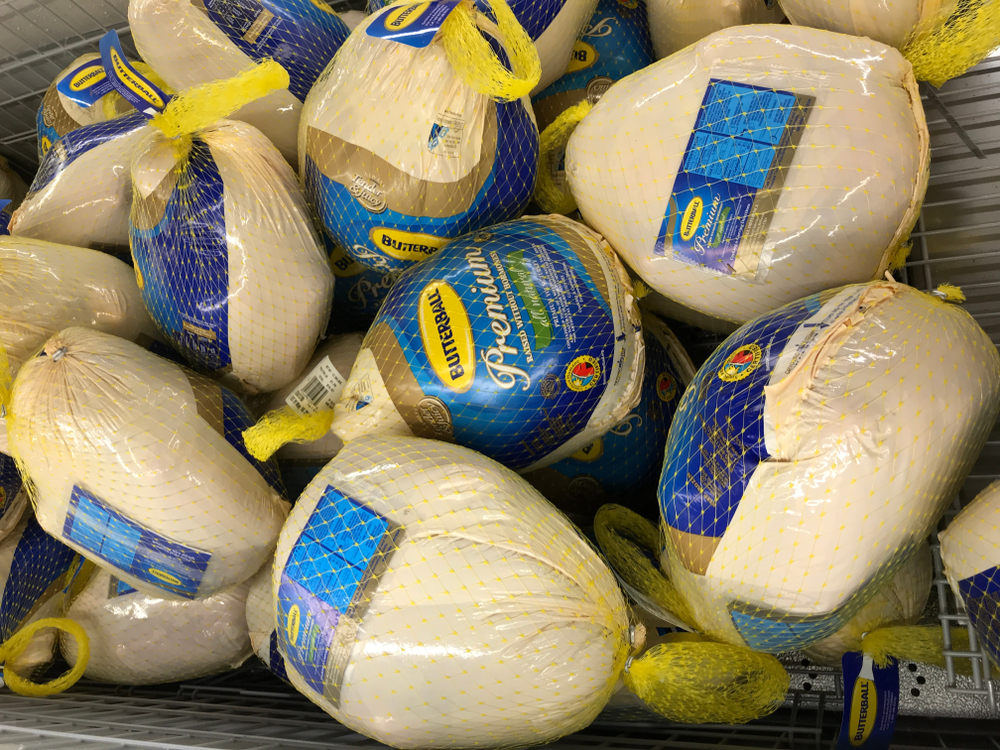Butterball turkeys have become a staple for many families’ Thanksgiving and holiday meals. Known for their moist, tender meat, Butterball turkeys seem to cook up juicier than regular supermarket birds. But what gives Butterball turkeys their distinctive flavor and texture? The answer lies in a hidden “marinade” injected deep into the turkey meat.
The Purpose of Turkey Infusion
Butterball, like many poultry companies, injects its whole turkeys and turkey parts with a seasoned broth solution prior to sale This process is known as “marinade infusion” or simply “infusing”. The main purposes of infusing turkey are
-
Add moisture – Infusion helps turkey stay juicy when cooked.
-
Improve flavor – Seasoning permeates deep into the meat
-
Increase tenderness – Added moisture keeps the meat tender.
Without an infusion, the breast meat in particular would end up dry and bland. The infusion gives Butterball turkeys their signature juicy, savory flavor.
What’s in the Butterball Turkey Infusion?
The exact formula Butterball uses is a proprietary company secret. However, by examining ingredient lists and analyzing the taste, we can make educated guesses about what the infusion contains:
-
Water – Provides moisture and transports seasonings into the meat.
-
Salt – For flavor. Also contains sodium phosphate to help retain moisture.
-
Sugars – For subtle sweetness and to balance flavors.
-
Vegetable broth – For savory flavor without using animal products.
-
Spices and herbs – Likely include garlic, onion, sage, rosemary, thyme, and black pepper.
-
Natural flavors – Provides meaty, savory turkey flavor.
-
Vegetable oil – For richness, juiciness, and texture.
-
Preservatives – Help maintain color and slow spoilage.
So while the exact percentages are unknown, the infusion clearly contains a blend of seasonings, broths, and natural flavors dissolved in a water solution.
How is the Infusion Injected?
Injecting a complex solution deep into whole turkeys and large turkey parts is a multi-step industrial process:
-
The infusion is prepared in large batches based on Butterball’s formula.
-
The liquid marinade is loaded into multiple needle injectors.
-
The injectors penetrate deep into the turkey, infusing up to 15% of the meat’s weight.
-
Turkeys are injected at multiple points to distribute infusion evenly.
-
The puncture points are quickly sealed to prevent leakage.
-
The infused turkeys are chilled to solidify the solution within the meat.
Potential Concerns About Infused Turkeys
While the infusion process is considered safe and approved, some concerns have been raised:
-
High sodium – The salt and sodium phosphate significantly boosts sodium levels. An issue for people limiting sodium intake.
-
Phosphates – Some consumers wish to avoid added phosphates in foods. However, phosphates help retain moisture.
-
Allergens – The infusion may contain potential allergens for some individuals. Always check ingredients.
-
Masking quality – There is a misconception that infusions help cover up undesirable meat characteristics. In reality, Butterball uses high quality turkey meat.
-
Over-reliance – Some argue injections become a crutch for cooks instead of properly brining or seasoning the meat themselves. However, infusions provide convenience and guaranteed results for home cooks.
Cost and Nutrition Difference From Non-Infused
There is a slight difference in cost and nutrition between infused and non-infused turkeys:
-
Cost – Infused turkeys cost approximately $0.50-$1 more per pound due to added processing.
-
Sodium – Infused turkeys contain around 5-15% more sodium than plain turkey.
-
Phosphorus – Phosphate in the infusion increases phosphorus levels.
-
Protein – Although diluted slightly, infused turkey still provides high quality protein.
For many consumers, the enhanced flavor and ease of cooking infused turkeys is worth the small premium. However, non-infused turkeys remain a more budget-friendly option.
How Can You Tell if a Turkey is Infused?
It’s not always obvious just by looking at it. Here are a few tips to identify an infused turkey:
-
Check the brand – Butterball and other major brands infuse their turkeys.
-
Look for labeling like “Injected”, “Infused”, or “Up to 10% Retained Water”.
-
Review ingredients for broth, phosphates, etc.
-
Check the sodium levels in the nutrition facts.
-
Note the price per pound – infused turkeys usually cost a little more.
-
Observe some liquid pooling in the packaging – a possible sign of infusing.
-
Cook it and check the texture and flavor – superior moisture and taste indicates infusion.

Are Butterball turkeys injected with salt?
FAQ
What are Butterball turkeys infused with?
Are Butterball turkeys brined or injected?
Are Butterball turkeys hormone and antibiotic free?
What are frozen turkeys injected with?
